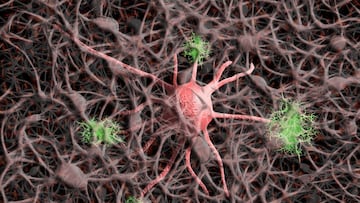Scientists reversed Alzheimer’s in mice — thanks to drug that mimics the brain’s ‘gatekeeper”
A research team has found a way to restore brain communication and memory function in mice — offering real hope that Alzheimer’s could one day be treatable.

In a groundbreaking study, scientists from Spain and China have managed to reverse the effects of Alzheimer’s disease in mice, using an innovative therapy that restores communication between brain cells.
The discovery, led jointly by the Institute for Bioengineering of Catalonia (IBEC) and the West China Hospital at Sichuan University, focuses on repairing the brain’s protective shield — the blood-brain barrier — often called the brain’s “gatekeepers.” This barrier acts as a filter, keeping harmful toxins and pathogens out. But in people with Alzheimer’s, it stops working properly, allowing damage to spread unchecked.
How the new treatment works
To tackle this, researchers designed bioactive nanoparticles — microscopic particles capable of restoring the normal function of the blood-brain barrier. When introduced into the brains of mice with Alzheimer’s, these particles helped the brain’s cells “talk” to each other again.
According to Junyang Chen, co-author of the study and a researcher at West China Hospital, the effects were almost immediate.
“Only one hour after the injection, we observed a reduction of 50 to 60% in [amyloid protein] amount inside the brain,” Chen explained.
These nanoparticles function like “supramolecular drugs”, the study authors said, reactivating the brain’s natural cleaning system to remove beta-amyloid plaques — the toxic protein clusters that cause cognitive decline.
🧠 Scientists from #IBEC & @IHuaXi have reversed Alzheimer’s in mice after only 3 injections with bioactive nanoparticles!
— IBEC (@IBECBarcelona) October 7, 2025
This nanotech approach restores the blood–brain barrier instead of targeting neurons, a promising step toward an effective treatment. pic.twitter.com/eIzQwh4Wdq
From lab mice to long-term memory recovery
The team didn’t stop at short-term effects. They monitored the mice for months to see whether memory and cognitive function would return.
In one key test, a 12-month-old mouse (roughly equivalent to a 60-year-old human) received the nanoparticle treatment. Six months later, its behavior and memory tests matched those of a healthy animal.
For researchers, this suggested something extraordinary — that restoring the brain’s protective barrier might also restore lost memories.
“The long-term effect comes from restoring the brain’s vasculature,” explained the study’s lead researcher, Professor Giuseppe Battaglia, in a statement. “Once the vasculature is able to function again, it starts clearing [amyloid proteins] and other harmful molecules, allowing the whole system to recover its balance.”
“What’s remarkable is that our nanoparticles act as a drug and seem to activate a feedback mechanism that brings this clearance pathway back to normal levels,” he added.
Related stories
Get your game on! Whether you’re into NFL touchdowns, NBA buzzer-beaters, world-class soccer goals, or MLB home runs, our app has it all.
Dive into live coverage, expert insights, breaking news, exclusive videos, and more – plus, stay updated on the latest in current affairs and entertainment. Download now for all-access coverage, right at your fingertips – anytime, anywhere.
Complete your personal details to comment